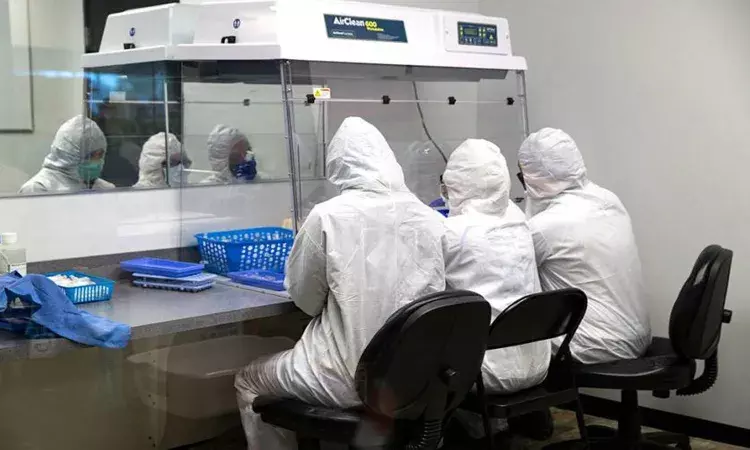- Home
- Medical news & Guidelines
- Anesthesiology
- Cardiology and CTVS
- Critical Care
- Dentistry
- Dermatology
- Diabetes and Endocrinology
- ENT
- Gastroenterology
- Medicine
- Nephrology
- Neurology
- Obstretics-Gynaecology
- Oncology
- Ophthalmology
- Orthopaedics
- Pediatrics-Neonatology
- Psychiatry
- Pulmonology
- Radiology
- Surgery
- Urology
- Laboratory Medicine
- Diet
- Nursing
- Paramedical
- Physiotherapy
- Health news
- Fact Check
- Bone Health Fact Check
- Brain Health Fact Check
- Cancer Related Fact Check
- Child Care Fact Check
- Dental and oral health fact check
- Diabetes and metabolic health fact check
- Diet and Nutrition Fact Check
- Eye and ENT Care Fact Check
- Fitness fact check
- Gut health fact check
- Heart health fact check
- Kidney health fact check
- Medical education fact check
- Men's health fact check
- Respiratory fact check
- Skin and hair care fact check
- Vaccine and Immunization fact check
- Women's health fact check
- AYUSH
- State News
- Andaman and Nicobar Islands
- Andhra Pradesh
- Arunachal Pradesh
- Assam
- Bihar
- Chandigarh
- Chattisgarh
- Dadra and Nagar Haveli
- Daman and Diu
- Delhi
- Goa
- Gujarat
- Haryana
- Himachal Pradesh
- Jammu & Kashmir
- Jharkhand
- Karnataka
- Kerala
- Ladakh
- Lakshadweep
- Madhya Pradesh
- Maharashtra
- Manipur
- Meghalaya
- Mizoram
- Nagaland
- Odisha
- Puducherry
- Punjab
- Rajasthan
- Sikkim
- Tamil Nadu
- Telangana
- Tripura
- Uttar Pradesh
- Uttrakhand
- West Bengal
- Medical Education
- Industry
UK woman on path to recovery from COVID-19 after 58 days on ventilator: Indian-origin doctor

London - An Indian-origin doctor has described how one of his coronavirus patients is on the path to recovery and has even begun communicating after 58 days on a ventilator.
Dr Sanjay Gupta, lead consultant for critical care at Southampton General Hospital on England's south coast, told The Sunday Times while the unidentified 35-year-old patient is still supported by a ventilator, she is no longer entirely reliant on one and is being "weaned off" the support.
Read Also: Harsh Vardhan calls doctors, medical staff super-humans at 73rd World Health Assembly
"Suddenly she can communicate, whereas before she was so weak she could barely lift a finger to write anything," said Gupta.
"She has virtually no muscle strength left — barely enough to breathe.
If you're on a ventilator or in intensive care, your skeletal muscles decondition," he said.
Most recent findings have indicated a very high chance of death for COVID-19 patients placed on ventilators and therefore the woman's recovery is particularly remarkable.
Patients who go into intensive care are intubated, meaning that a breathing tube is inserted through their mouth.
A ventilator attached to the tube can then push air into their lungs.
After a patient has spent about three weeks on a ventilator, doctors commonly perform a tracheostomy, creating a surgical opening in the windpipe that replaces the tube.
The patient at the Southampton hospital had a tracheostomy several weeks ago, the newspaper said.
"A tube through the front of your neck is easier to tolerate. It means that you can basically wake the patient up, switch off all sedation and start to mobilise them more," explains Gupta.
After almost two months of 24-hour monitoring, the patient still faces a lengthy convalescence with a prolonged period of rehab but the recovery will give hope to other patients who require critical care after contracting the deadly virus which attacks the lungs.
Read Also: Pakistani doctor indicted on terrorism charge in US
Medical Dialogues Bureau consists of a team of passionate medical/scientific writers, led by doctors and healthcare researchers. Our team efforts to bring you updated and timely news about the important happenings of the medical and healthcare sector. Our editorial team can be reached at editorial@medicaldialogues.in.


